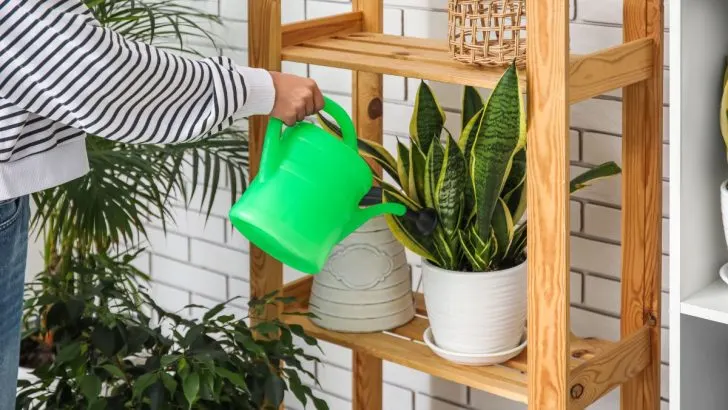In today’s article, we’re going to talk about one of the succulent indoor plants (popular house plants) that you’ll want to have in your home more than anything after you read everything below. But not that only.
We’ll talk about how often to water snake plant. Snake plant care isn’t very tricky but this is something you need to know.
Excess water and an overwatered snake plant aren’t something you want for sure. Root rot and many more issues can come along when you do so.
Water your snake plant as our ultimate care guide says below and you will not have issues. So, are you ready to learn more about it?
To be sure that we’re saving our plant’s roots and providing active plant growth, let’s start with our article.
Snake Plants Features
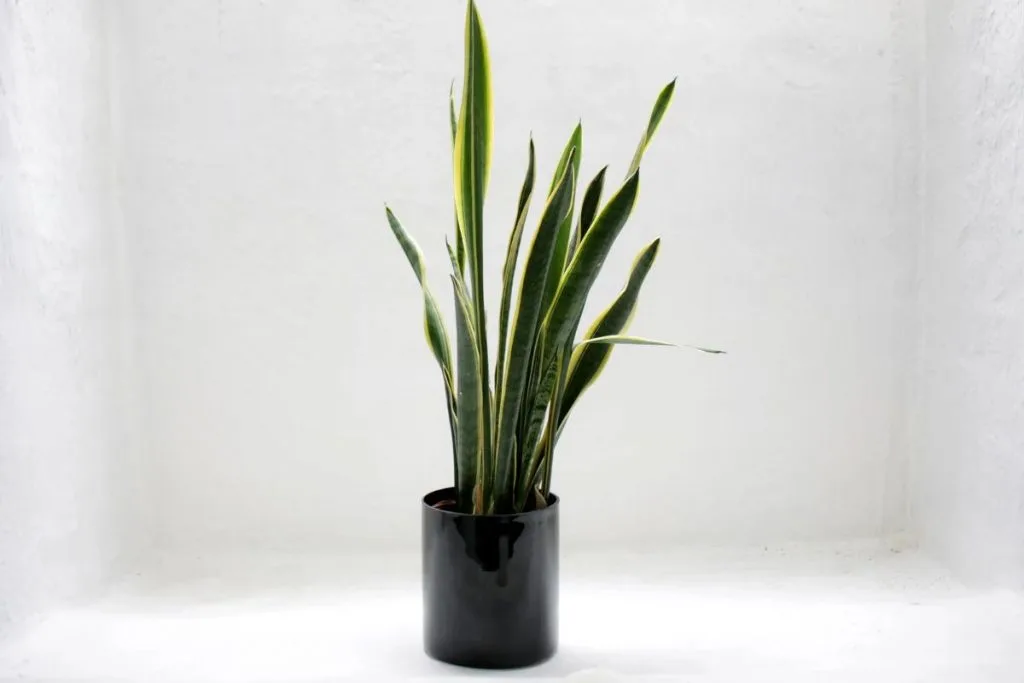
Sanseveria, also known as mother-in-law’s tongue and snake plant, has found a place in many homes and offices thanks to its effective appearance.
A slightly different, more unusual, but very effective version of it is the starfish, whose appearance irresistibly resembles a starfish.
Unlike the narrow and vertical leaves of the snake plant, starfish sansevieria has plump and tubular leaves that taper at the tip.
The arrangement of the leaves, as the name suggests, resembles the shape of a starfish, and interior design experts say it gives the space a ‘punk rock effect’.
In addition to its excellent appearance, it is distinguished by its ease of cultivation – it thrives in any light and generally requires water every other week, and watering even once a month is sufficient.
The plant is stiff, has sword-like leaves, and can grow anywhere 2 to 8 feet high. Snake plants can be different in color, but many have green striped leaves and a yellow border.
These plants are easy to grow and are often rarely destroyed. They thrive in very bright light or almost dark corners of the house.
Snake plants grow slowly indoors, but increased exposure to light accelerates their growth when exposed to direct sunlight for several hours. It is best to plant and replant in the spring.
Snake Plant Maintenance And Care
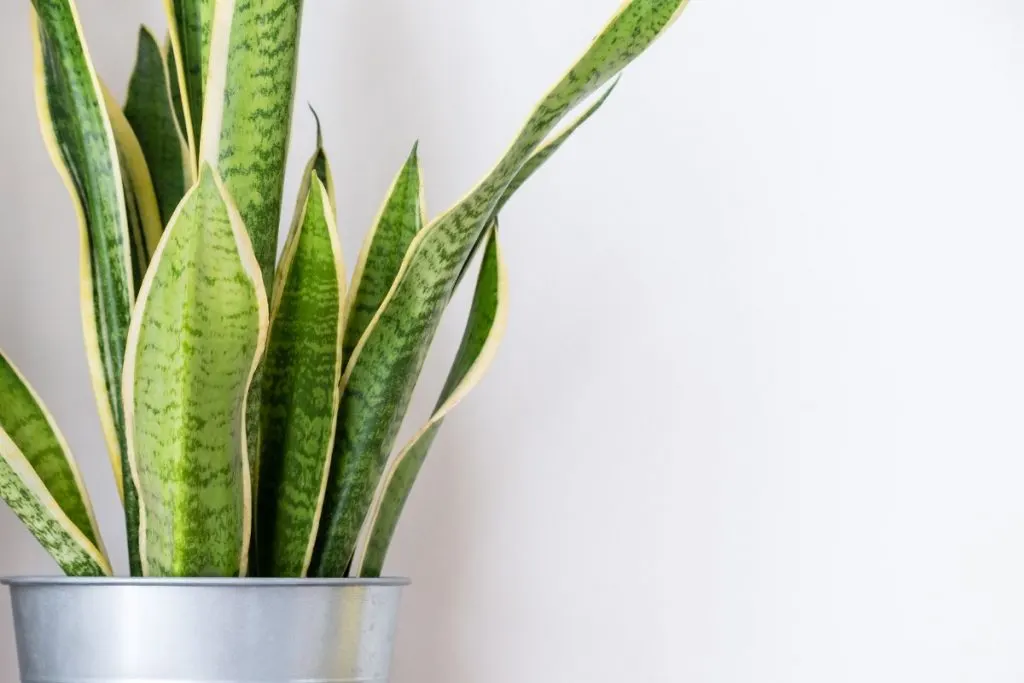
Snake plants are challenging to kill, making them an ideal choice for novice gardeners. Great for containers and grows well on the floor and tabletop displays. Snake plants thrive in warm weather and suffer from the cold.
Although this plant is drought resistant, it is prone to over-watering and causing root rot. Water the plants only when the soil feels dry.
These plants can go for two months during the winter without watering. In the warmer months, water at most every two weeks.
How Long Can Snake Plant Go Without Water?
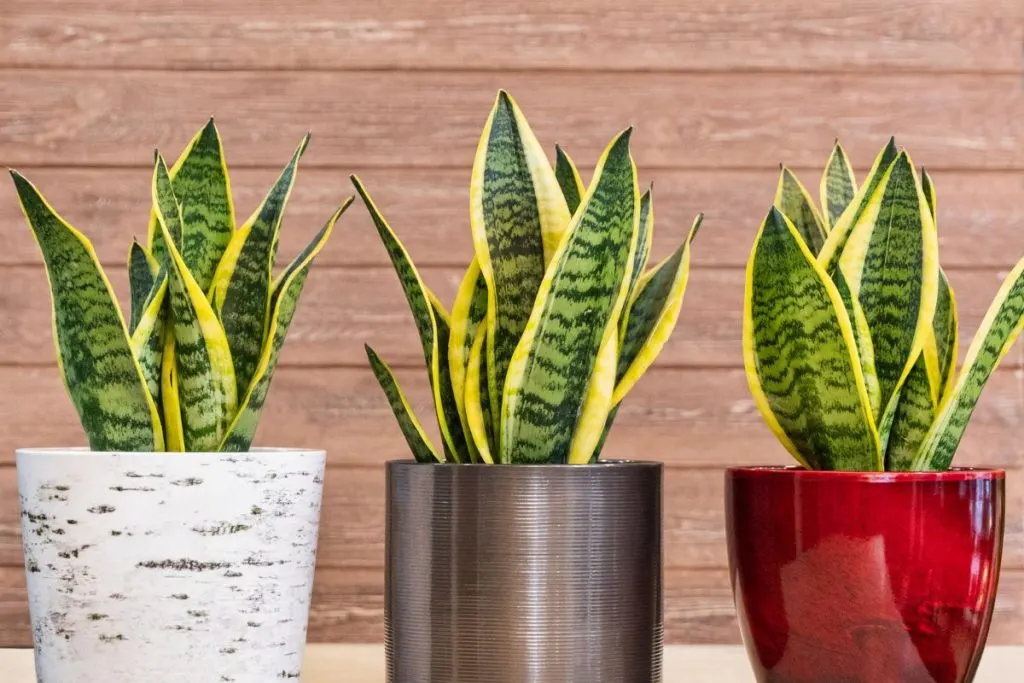
This houseplant is a drought tolerant plant, and it can survive with no water for 2 full weeks.
If you go on a vacation and your plant stays home all alone with no water, no problems. She won’t die and once you come back, water it immediately. She will keep growing as if nothing happened.
How Often To Water Snake Plant? Watering Schedule

As with any other plant, sometimes is easy to cross the “boundaries” when it comes to watering our plants.
Watering snake plants is very simple. Completely dry soil won’t kill your snake plant right away but it is not recommendable for a longer time.
This plant is drought tolerant but watering mistakes are made easily. When mistakes are made, they lead to drooping leaves, plant’s leaves become yellow, your plants develop root rot happens, and much more.
If we want to see healthy white roots and the new plant soon from three or four cuttings, the moisture level should be medium and waterlogged soil isn’t the best option.
You’ll feel a rotten smell, and much more. When this occurs, more frequent watering is the last option your plant needs.
Moisture levels can always be checked with a finger rule. But sometimes, for succulents like this plant, that doesn’t always have to apply.
Wet feet of your plants aren’t desirable for most snake plants in these months especially. Low light should be an option now too.
How Long Is The Period Of Watering Snake Plants?

Once you poured enough water into your pot and it’s not touching the leaves and your plant stem isn’t drowning in water, that means you’ve put enough water into your plant’s pot and you should stop.
After a long drought period, maybe you should water it a bit more than usual, but only for that one day. Everything above that could create some contra-effects that you wouldn’t like for sure.
Water Only The Soil, Not The Leaves!
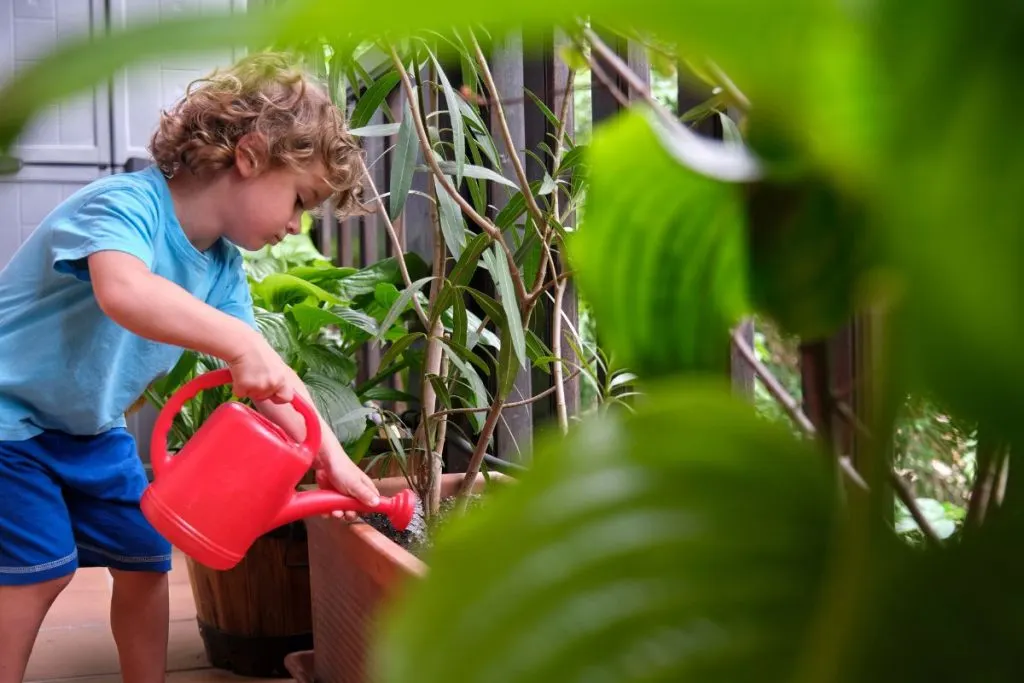
When watering snake plants, it is important to focus on watering the soil. As your snake plant absorbs water, it absorbs nutrients from fertilizers and soil, mainly through its roots.
Even if you research and purchase the best fertilizer for snake plants, you will not get the desired effect unless you apply it to the soil.
Most plants can tolerate wet leaves and flowers, but snake plants are not one of them. When the leaves of a plant get wet, it can cause rot roots and kill snake plants.
Dry The Soil Between Watering
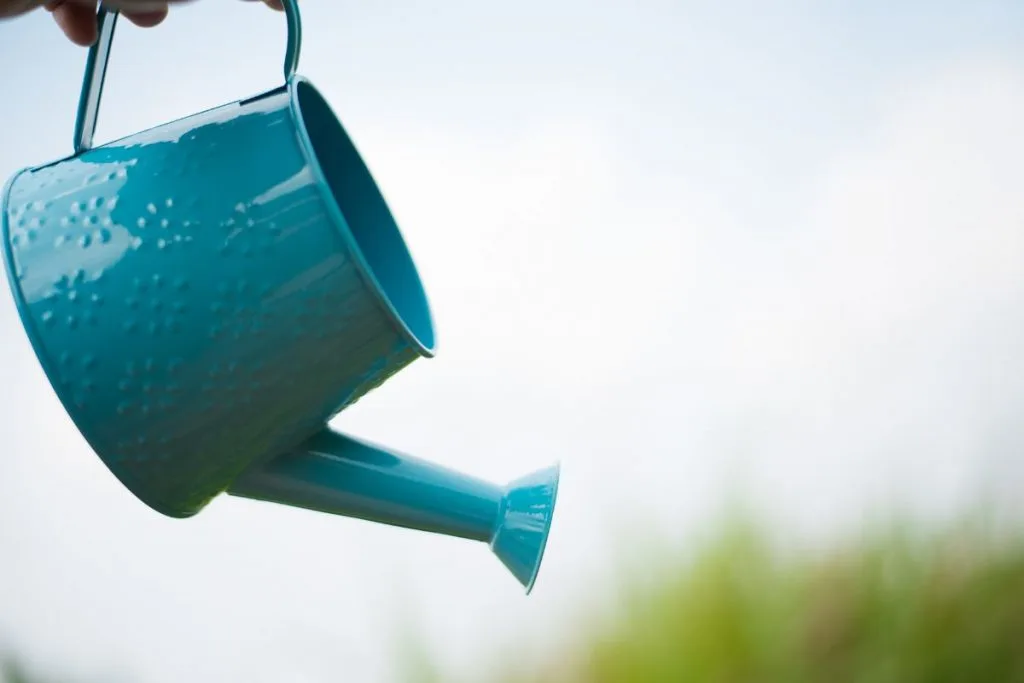
As mentioned above, snake plants do not like “wet feet”. Your snake plant will understand that the roots of the plant can absorb water and dry a little before re-watering.
If the soil still appears moist after a few days, it is advisable to monitor the plants and water every 2-3 days or more. Again, this probably depends on the type of garden soil you used.
Oops, Overwatering Alert

Unfortunately, the watering and signs of watering snake plants are similar. Overwatered plants can cause root rot.
The fungi that cause root rot to grow in moist soil and infect nearby plants if they share the same space.
It is necessary to correct the root rot of snake plants as soon as you notice signs of onset. there is. Careful monitoring of plant moisture levels is required.
How To Be Sure Your Snake Plant Is Hydrated?

Here are 3 ways to know for sure that your snake plant has enough water:
- Immediately after watering the plants, you will notice that the topsoil is dark. You will also notice that the soil appears to be a little shiny immediately after watering. This means that we have so far supplied the soil with enough water to absorb it.
- After watering the snake plants, be sure to stay nearby and watch the topsoil change color. This usually takes 1-2 hours. At this point, the soil is no longer shiny, but it is still dark and looks the same as it looked before adding water. When you press your finger against the ground, you should not see the water rising on the surface above your finger.
- After 24 hours, you will notice that some areas of the Earth are still dark black or brown, while others are a little lighter. That’s a good sign. Prevent water from accumulating on the surface of the soil and push your finger into the soil to make it feel damp. If the top of the soil is still dry, this indicates that the plants are not getting enough water and may need more water.
Best Water Type For Snake Plants
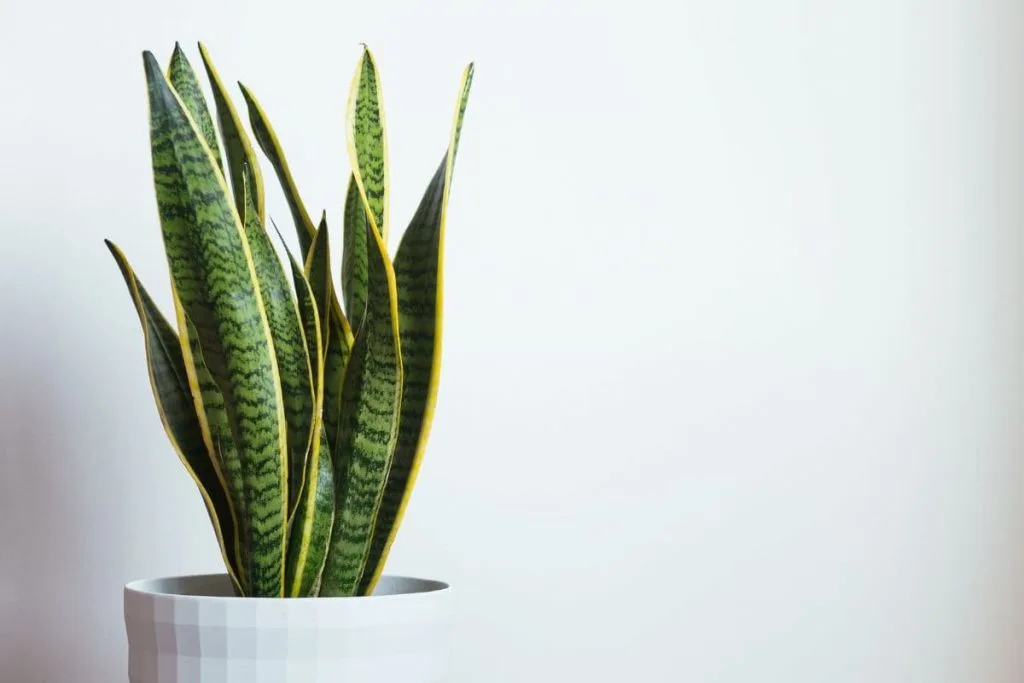
In most cases, all kinds of water used for houseplants are suitable for use with snake plants. However, the best type of water is rainwater or spring water.
Rainwater and springs are free of harmful minerals that can impede plant growth, especially when compared to hard water.
And while distilled water isn’t necessarily bad for your snake plants, it tends to grow faster when watered in spring with rainwater.
Snake Plant Pot Type Matters
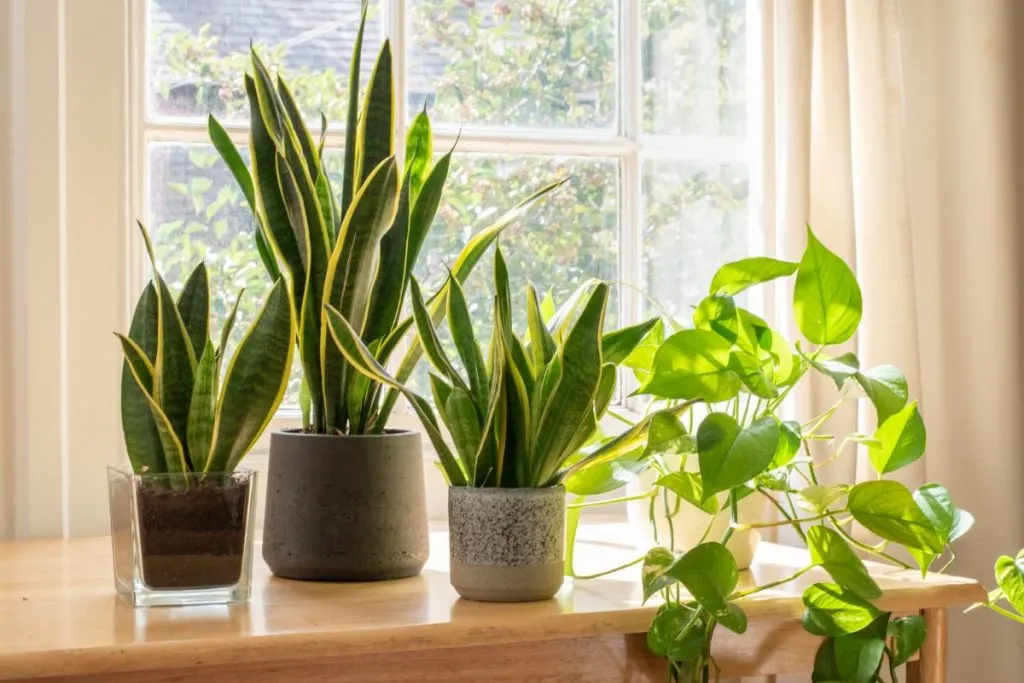
It is important to consider the pot type as well. Glossy or plastic pots retain water better because they do not allow water to evaporate from the sides.
More porous pots, such as terracotta pots, allow some water to be lost as they penetrate and evaporate from the walls of the pot itself. Size is also important.
If the pot is much larger than the root ball, there will be more space for the soil and it will retain more water when wet.
This creates the risk of over-watering. Snake plants tend to dislike “wet feet”, so a properly sized pot with little extra space is ideal.
How Much Light For A Snake Plant?
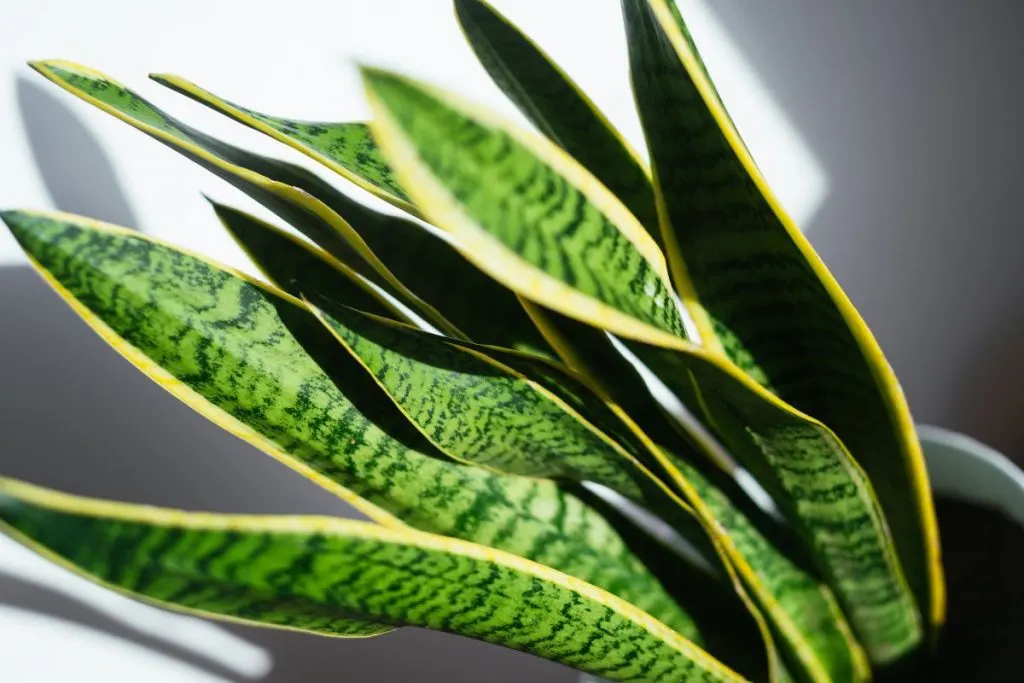
Snake plants grow well in sun as well. They can adapt to perfect sun conditions and withstand dim conditions. However, too much direct sun can kill it.
Indirect light works well for most plants that are succulents. The plant grows the best in these conditions. If you overdo it with too much sun, leaves begin to dry and they become yellow.
Sometimes, dry air and indoor temperature can have a lot of effects on the leaves as well. Central heating isn’t the best option for it. Air surrounding should always be considered.
Potting Soil For Snake Plant
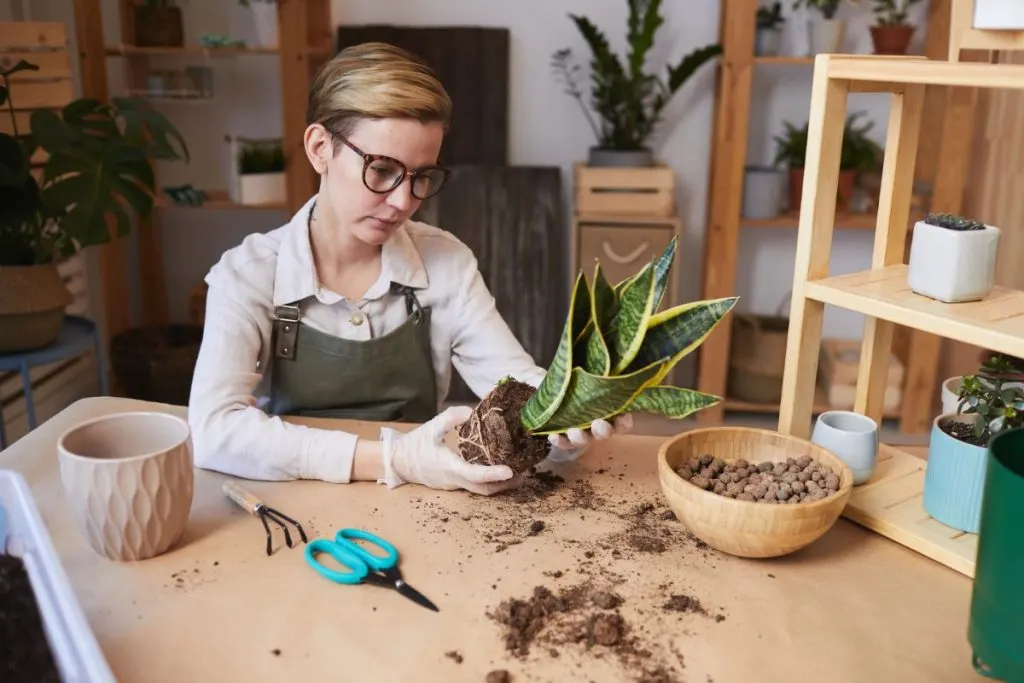
Snake plant’s soil should be well-drained, with loose potting compost. This plant works well on sandy soil.
Use a material with less peat and always fresh soil, soil probe, and water retentive soil. This type of soil retains nutrients. A porous pot is the best choice for these soils.
Since they are both drought tolerant and succulents, the cactus mix can do the work. Add a bit of coconut husk as well.
Peat works well in many situations, but it can be packed tightly and can have problems with hydration and drainage. All-purpose cactus soil is a good choice along with the potting mix.
Free draining soil works well too. Sometimes, regular potting soil works as well if you provide the other conditions right. Damp soil isn’t bad either but it shouldn’t be your first choice.
In these cases, your plant saucer should have drainage holes. Wrong soil, just as overwatering can lead to root ball redevelopment and rooting. Always allow your plant to excess water drain.
Temperature And Humidity

Snake plants prefer warm conditions and suffer when exposed to temperatures below 50 F. Place the plant in a place protected from the draft.
The optimum temperature range is between 70 and 90 F, frost will kill this plant. Humidity levels can be both high and medium and the snake plant will still thrive well.
Fertilizer
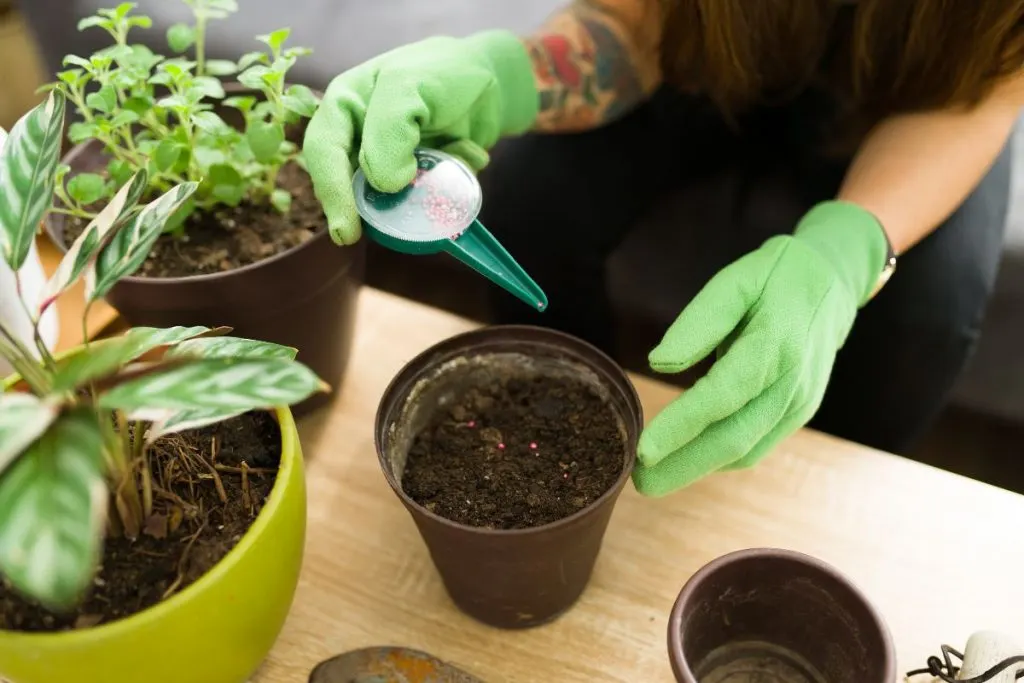
Feed with a mild cactus fertilizer during the growing season or a balanced liquid slow-release 10-10-10 fertilizer or a 20-20-20 fertilizer diluted to half strength. Do not fertilize in the winter.
Pruning Snake Plant
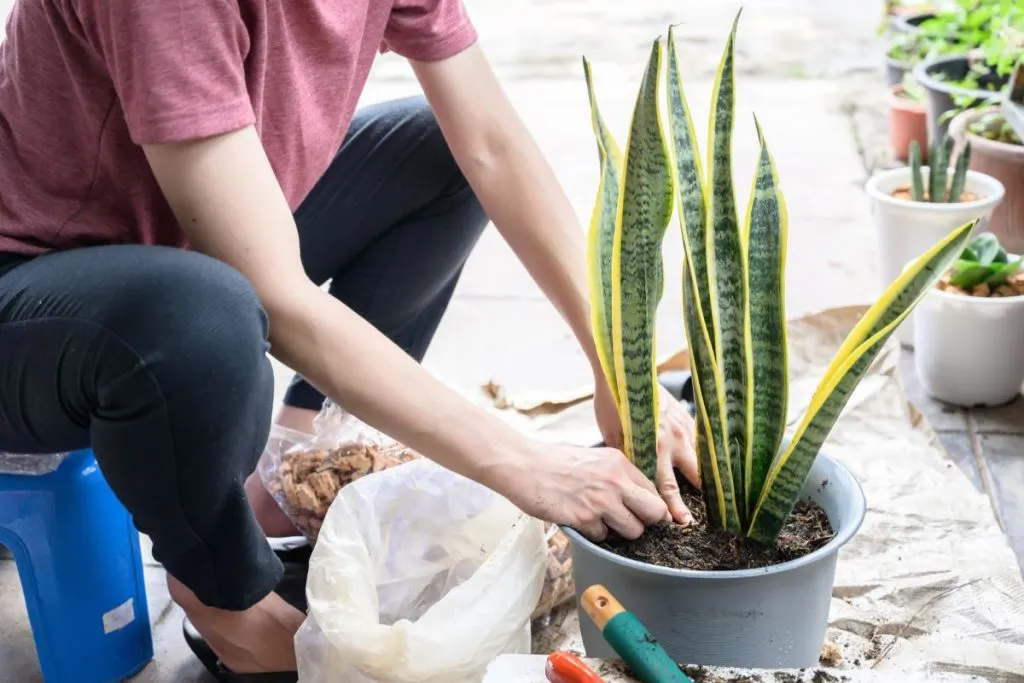
Use sterile pruning shears, scissors, or a sharp knife to remove the leaves on the soil line or cut off damaged or mature leaves to promote new growth.
The best time for pruning is during the growing season, usually spring or summer.
Although pruning can be done during the off-season, pruning can stress the plant and is best done when the plant is in the growing stage.
To control the height of the snake plant, remove the tallest leaves. Also, remove all damaged leaves. Removing the leaves promotes the growth of new leaves.
Propagated Snake Plant
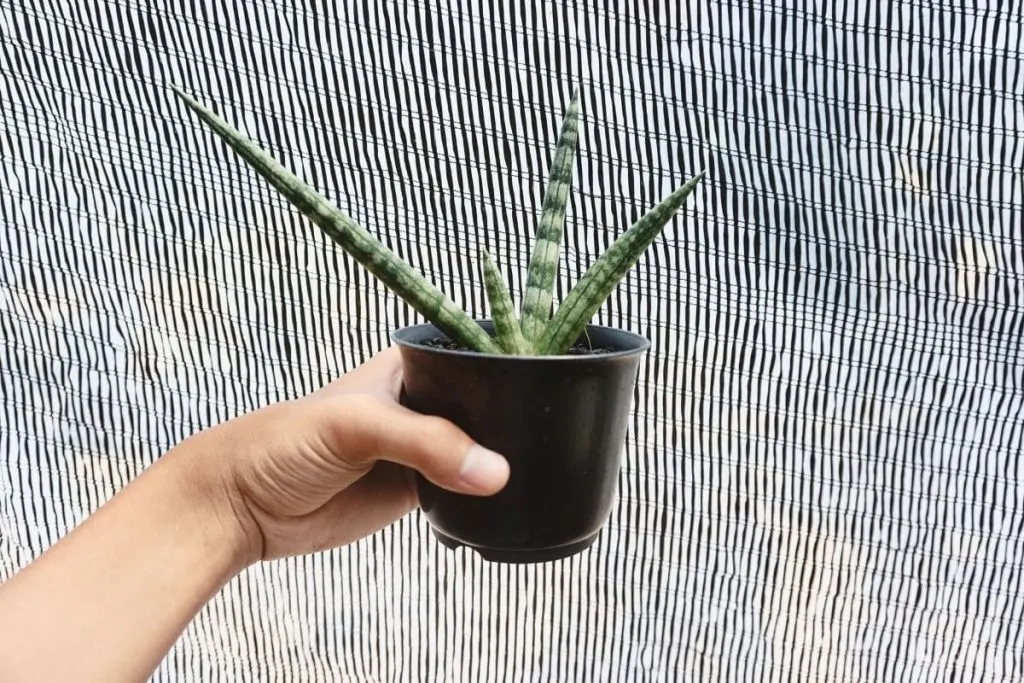
Propagation is best done during the spring or summer growing season. Dracaena plants can be easily split at the time of transplanting if the plant height is 4 inches or more.
Alternatively, new shoots can grow from the soil and be independently potted. You can also breed snake plants from cuttings.
Follow these instructions for both methods:
- Collect sharp knives, clean pots, and cactus soil.
- Pull the root bulb out of the old pot and place the plant on a flat surface.
- Use your hands to gently remove the soil from the root structure and rhizomes.
- Use a sharp knife to divide the plant into sections, leaving the roots of each section intact.
- Cutting a plant does not kill it.
- Transplant the new snake plant section into a clean pot of cactus soil.
Repotting Snake Plants
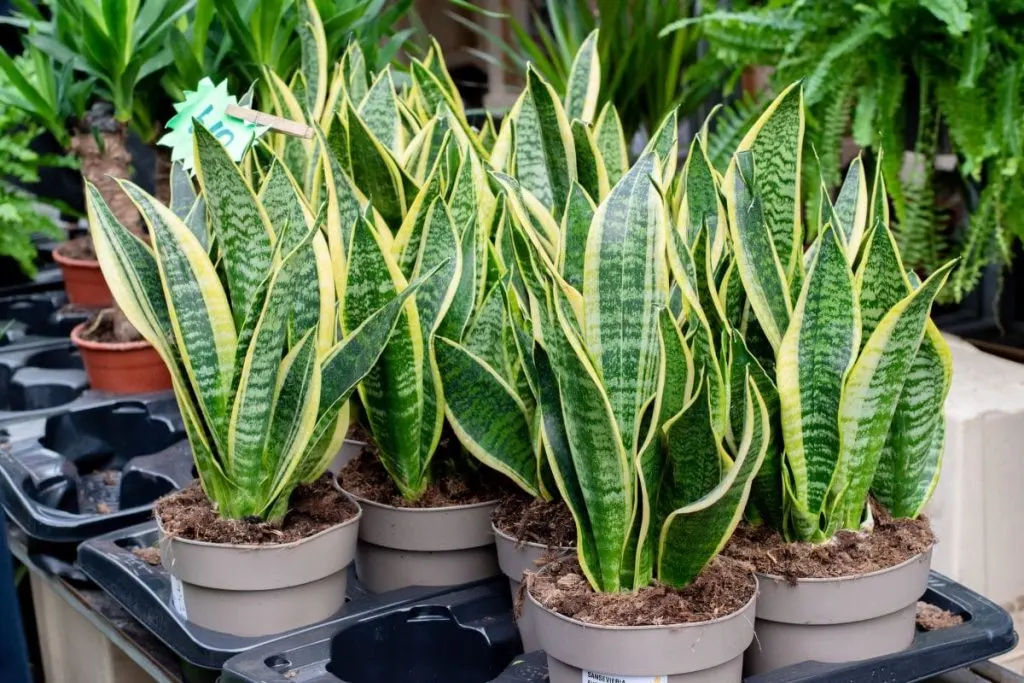
Choose strong potting materials when potting, as strong roots can easily crack or grind weak pots.
Dracaena is generally slow growing and rarely needs to be replanted, but it grows quickly in the event of sufficient sunlight and may need to be replanted or split.
Spring is the best time to replant these plants. Always use fresh culture soil, cactus soil, or a mixture of both when replanting this lovely plant collection.
Curling Issues Of Snake Plant

Signs of iron deficiency in plants can be recognized when the leaves start to curl at the ends. Lack of iron causes chlorosis, the symptoms of which are precisely the appearance of such leaves.
Another way to recognize chlorosis is when you notice new growth on a plant that is a washed-out green color.
This problem is best solved by determining the pH of the soil and reducing it below seven, after which you need to reduce the amount of phosphorus in the soil.
Signs of zinc deficiency can be recognized by discoloration, i.e. darker and lighter areas on the leaves, especially among the curling leaves. This problem can be solved by spraying the plant with seaweed extract.
Snake Plant Drooping Leaves
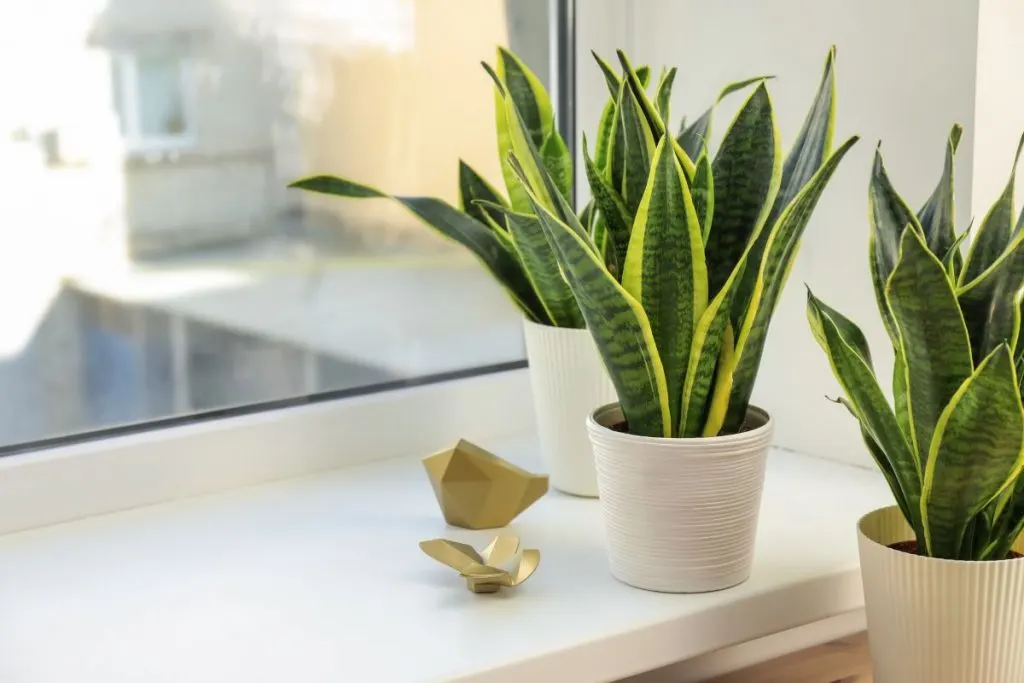
In the case of too little watering, the plant will first start to discard the leaves that are the oldest and smallest, then young and old leaves, and those that are closest to the base of the stem, because ultimately they did not receive enough light and water for growth.
When the plant is not watered enough, its source for the growth and development of the least important leaves is reduced. This happens in the winter months usually when most people cut water for their snake plant.
When such a plant is properly watered it can recover, but some damage has already been done, given that some plants react to a change in watering more slowly than others.
In some cases, it can happen that the plant will still have yellow leaves even after receiving enough water, which can be quite confusing because by all other characteristics it looks healthy.
Snake Plant Is Turning Yellow, What To Do?
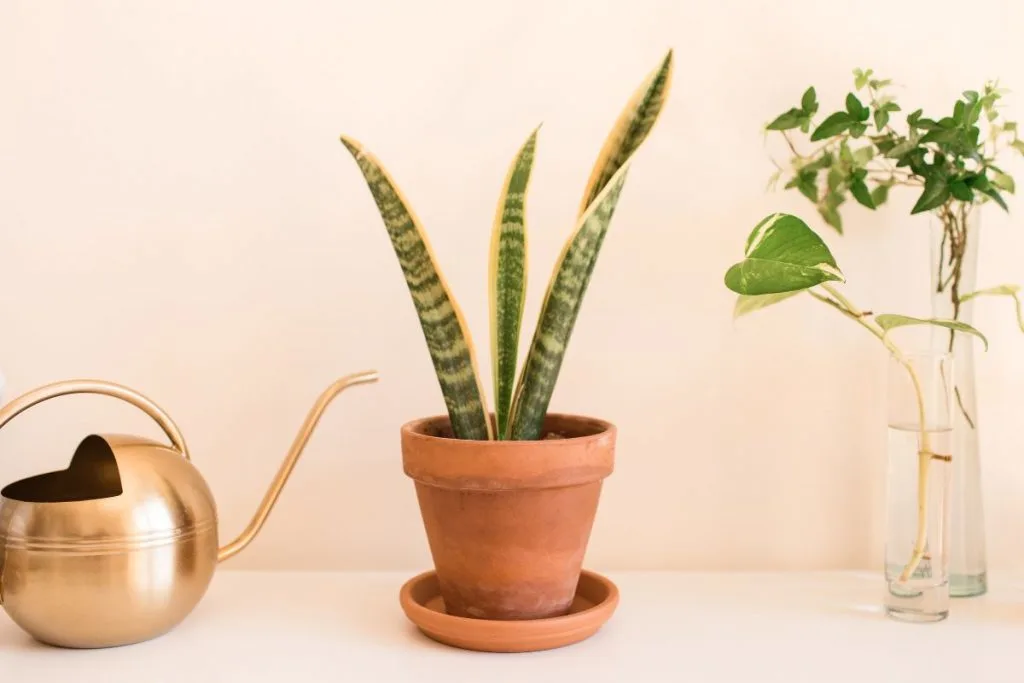
Probably one of the most common problems we face when growing plants is an excessive amount of water, or watering, which can be recognized by wilted and yellow leaves. This can also be caused by poor soil drainage, which results in water retention.
In this process, the root will eventually start to rot, fungi will grow more easily, and the leaves will soon begin to wither.
A good solution to this problem would be to add sand to the soil or transplant the plant into a jar with an opening at the bottom, where excess water can then escape.
In the case of too little watering, the plant will first start to discard the leaves that are the oldest and smallest, and those that are closest to the base of the stem, because ultimately they did not receive enough light and water for growth.
When the plant is not watered enough, its source for the growth and development of the least important leaves is reduced.
When such a plant is properly watered it can recover, but some damage has already been done, given that some plants react to a change in watering more slowly than others.
In some cases, it can happen that the plant will still have yellow leaves even after receiving enough water, which can be quite confusing because by all other characteristics it looks healthy.
This is common for plants that we have just bought because in garden centers or other stores they grow in ideal conditions.
From the moment we buy the plant and place it in our home, these conditions change because they often do not have enough light and airflow. This process will probably stop after the plant gets used to the new space and conditions in it.
Rethink the watering schedule of your lovely snake plant, check its location, and see what could affect your plant. When you do all of that, you will find a solution for those problems as well.
Overwintering Of A Snake Plant
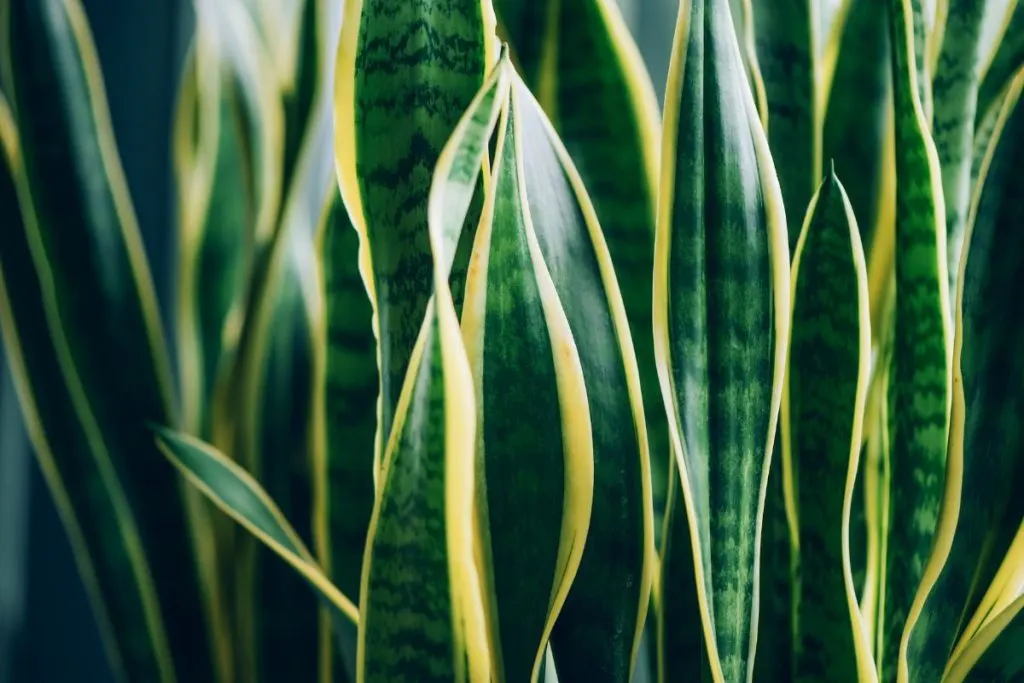
Snake plants are tropical plants that can die from temperatures below 50 F and winter frosts. Bring the plants indoors before the temperature gets too cold.
Store snake plants in a warm room, protect them from cold drafts, and take care of the soil on the dry side. During the winter, snake plants go dormant and stop growing. In winter, the plants need to be watered about every 6 weeks.
Snake Plants Are Good For Cleaning The Air

Similar to other households, snake plants help filter indoor air. What is unique about this plant is that it is one of the few plants that can convert carbon dioxide (CO2) into oxygen at night. This quality makes it an ideal plant for decorating the bedroom, as it can help regulate healthy airflow.
Types Of Snake Plants
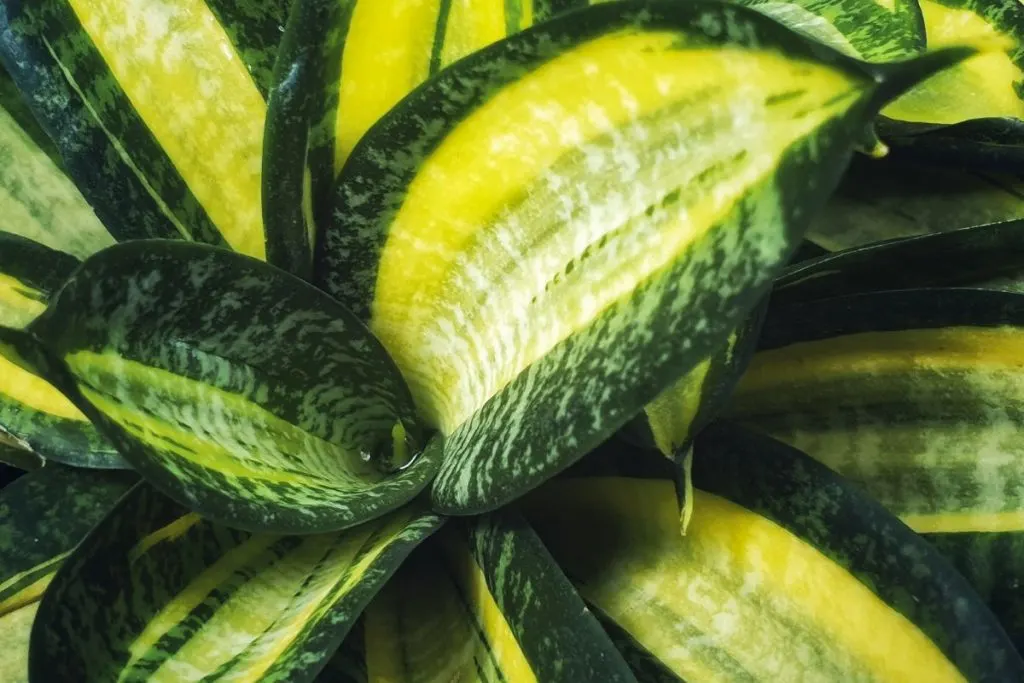
The most common leaves of the snake plant are slender, green leaves with gray or silver horizontal stripes. This plant can grow several meters and does well in low-light areas.
There is a great variety of these plants. Some of the more common ones include:
- Bird’s nest plant. Also called Hahnii, this plant is relatively small, growing to only 5 inches. Cup-like clusters are formed on the leaves, similar to a bird’s nest.
- The cylinder snake plant. Sansevieria cylindrica has round leaves that can grow several meters in length. The leaves of this plant reach outward to resemble a canopy.
- Laurentii Sansevieria. Laurentii is also a popular snake plant, known for its green-colored center and yellow edges.
Final Thoughts
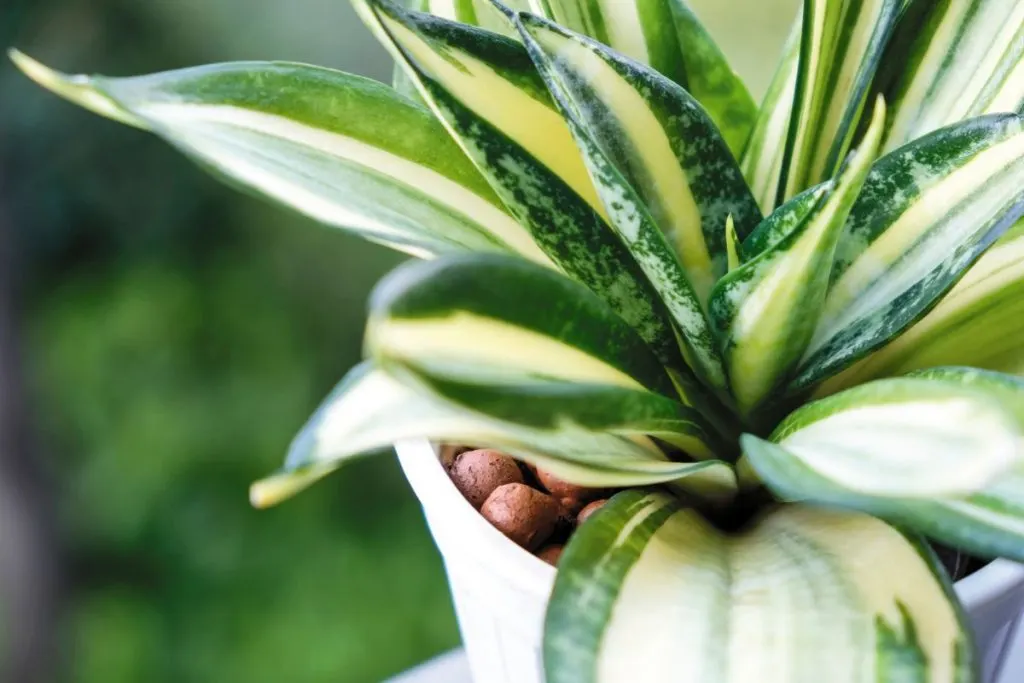
Hope you’ve learned all about this lovely succulent plant. If one thing is sure, I know that you know now how often to water snake plant right?
So, how often can you do it? I’m sure you know the right answer.
Along with that if you’re following the other tips and advice when it comes to its care guide. Your plant will just keep growing.
Stay with us for some other great articles.

